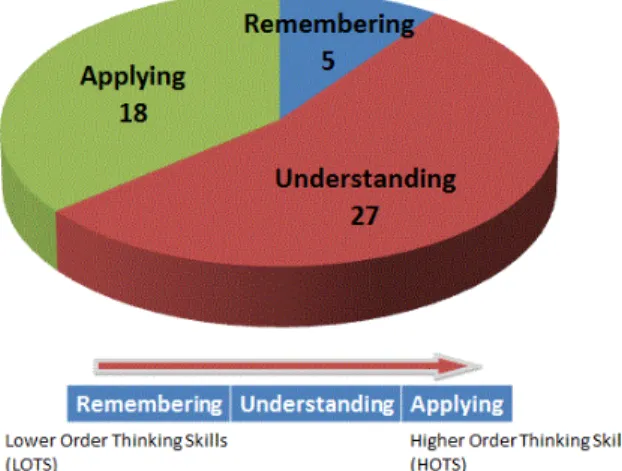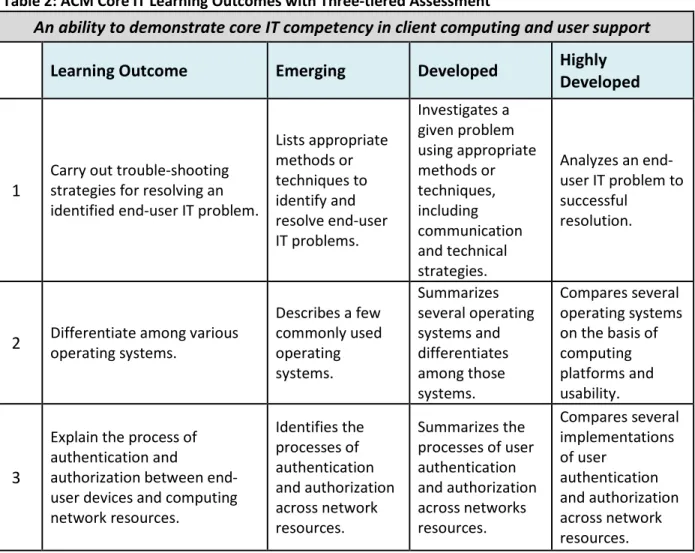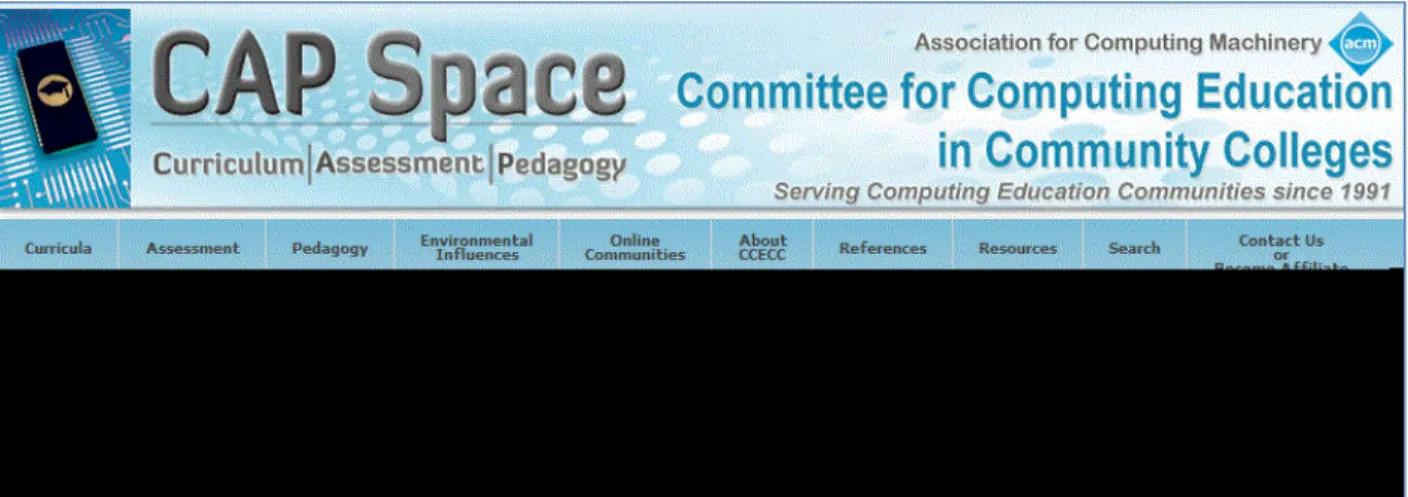ACM Competency Model of Key Learning and Assessment Outcomes for the Associate Degree Curriculum in Information Technology. Knowledge units of the 2008 ACM/IEEE-CS Curriculum Guidelines for undergraduate degree programs in information technology.
Assessment of Learning Outcomes
3 The ACM CCECC used a customized version of Bloom's Revised Taxonomy (Appendix C) in formulating student learning outcomes. Visit www.capspace.org/ITmappings/ for an interactive mapping of the core IT competencies to Bloom's Revised Taxonomy and select the Bloom's Taxonomy option from the drop-down menu.
Business Context
The targeted knowledge in these domains makes up the majority of the learning outcomes in this report. These highly desirable behaviors and attitudes are also part of the learning outcomes in this report.
International Sphere of Applicability
Throughout the evolution of computing education, no organization supported a report with recommendations that specifically addressed courses for other disciplines. Two decades later, information technology has become interdisciplinary and is an integral part of every field of study and every profession.
Mathematics Proficiency
McKenney, AACC Vice-President for Economic Development and International Programs, spoke as early as 2002 about the rapidly growing phenomenon of community colleges, two-year technical colleges and the two-year structure in general throughout Europe, the Americas and Asia (McJunkin, 2009).
Affiliated Coursework
ACM IT Core Learning Outcomes compared to other curricula, classifications and frameworks - www.capspace.org/ITmappings/. The entire list of essential IT learning outcomes with the accompanying assessment rubric is available online in an interactive format at www.capspace.org/ITassessment/.
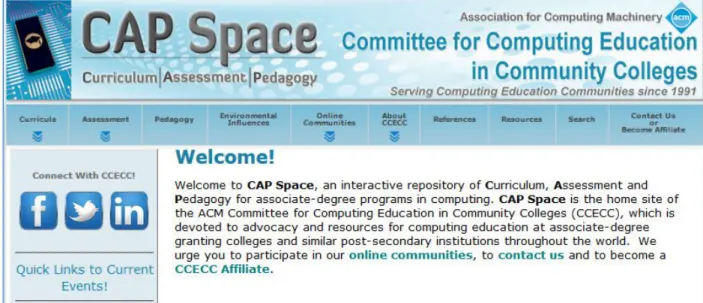
Developed
S. Department of Labor Information Technology Competency Model
A mapping of core IT learning outcomes to the IT competency model is available at www.capspace.org/ITmappings/. 26 Knowledge Units of the ACM/IEEE-CS 2008 Curriculum Guidelines for Undergraduate Degree Programs in Information Technology. A joint task force of the ACM and the IEEE Computer Society published a revision of Curriculum Guidelines for Undergraduate Degree Programs in Information Technology in 2008 that targeted four-year educational programs at the baccalaureate level.
A cross-reference of the ACM IT Core Learning Outcomes to Units of Knowledge in the Curriculum Guidelines for Undergraduate Information Technology Degree Programs is available at www.capspace.org/ITmappings/ by selecting this option from the drop-down menu.
CSTA Standards
ACM Computing Classification System
The Program Criteria provide discipline-specific accreditation criteria that must be met by any program seeking ABET accreditation. A mapping of the ACM core IT learning outcomes for this ABET CAC can be found at
The European e-Competence Framework
Common Criteria for Information Technology Security Evaluation
Key IT learning outcomes are in the process of being mapped to version 2.0 of the NICE Framework.
Bibliography
Knowing what students know and can do: The current state of student learning outcomes in America's colleges and universities. Urbana, IL: University of Illinois and Indiana University: National Institute for Learning Outcomes Assessment (NILOA). In fulfilling the committee's mandate, the ACM CCECC used a quasi-Delphi technique to continue a multiphase, three-year process of collaboration and discussion among representatives of two-year faculty, business, and industry and.
ACM CCECC would like to recognize and thank the following individuals individually, who generously served either as task force participants or as external reviewers for this project at the many stages of its development.
Task Force Participants
Michael Qaissaunee, Associate Professor and Department Chair, Engineering & Technology Brookdale Community College, Lincroft, NJ. Melanie Williamson, Associate Professor, Computer and Information Technology Bluegrass Community and Technical College, Lexington, KY. Montgomery County Community College, Blue Bell, PA Chris Wu, Assistant Director, MPICT (NSF ATE Center for ICT) City College of San Francisco, San Francisco, CA.
External Reviewers
Remembering - Retrieving, recalling, or recognizing information from memory
Applying - Using learned materials or implementing materials in new situations
An ability to demonstrate core IT competence within digital media and immersive technology 18 Differentiate between a range of technology-based sensory interactions. Ability to demonstrate core IT competency in networking and convergence 22 Perform basic computer network troubleshooting techniques. An ability to demonstrate core IT competence in programming and application development 28 Demonstrate best practice for the design of end-user computer interfaces.
An ability to demonstrate core IT competence in programming and application development (continued) 32 Summarize the differences between various programming languages.
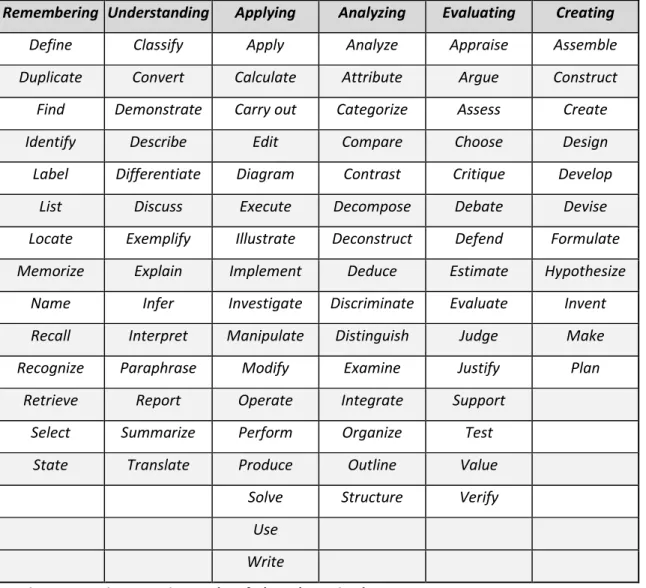
105 CNSS
CNSS 260: Network Security - This course covers the skills needed to protect computer systems, network systems, and information assets (information assurance). CNSS 272: CNSS 272 Co-op\Internship Work Experience - Directly related information technology work experience designed to provide students with "on the job" experience in a business workplace. Outcomes of this experience will include employability skills, interpersonal communication skills, and information technology skills.
130 CNSS
150 CNSS
220 CNSS
230 CNSS
231 CNSS
250 CNSS
251 CNSS
260 CNSS 272
Introduces topics including computer hardware and software, file management, the Internet, e-mail, the social web, green computing, security, and computer ethics. CIT 111: Computer Hardware and Software - Presents a practical overview of computer hardware and client operating systems. Covers computer hardware components; troubleshooting, repair and maintenance; operating system interfaces and management tools; network components; computer security; and operational procedures.
CIT 120: Computational Thinking - Promotes understanding of computer programming and logic by teaching students to "think like a computer." Covers skills needed to develop and design language-independent solutions to solve computer-related problems.
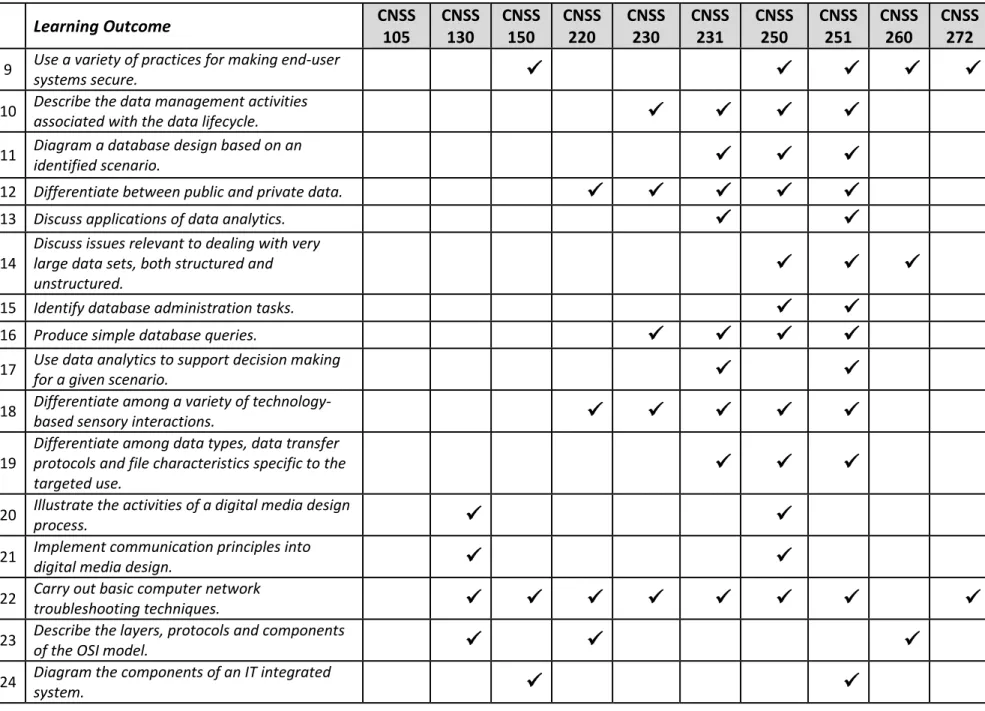
105 CIT
111 CIT
120 CIT
150 CIT
160 CIT
170 CIT
180 CIT
149 CIT 291
CTS 1133C: A+ Essentials - This course provides students with the knowledge necessary to assemble components based on customer requirements, install, configure and maintain devices, PCs and end-user software, understand the basics of networking and security/. COP 1334C: Introduction to C++ - This course provides an introduction to the design and development of computer programs using the C++ language. CET 2472C: Advanced Networking - This course provides students with the important knowledge and skills necessary to implement defined.
CGS 1557C: Internet Site Design - This course is an introductory course that provides students with basic technical knowledge and skills in Internet, intranet, and extranet technologies.
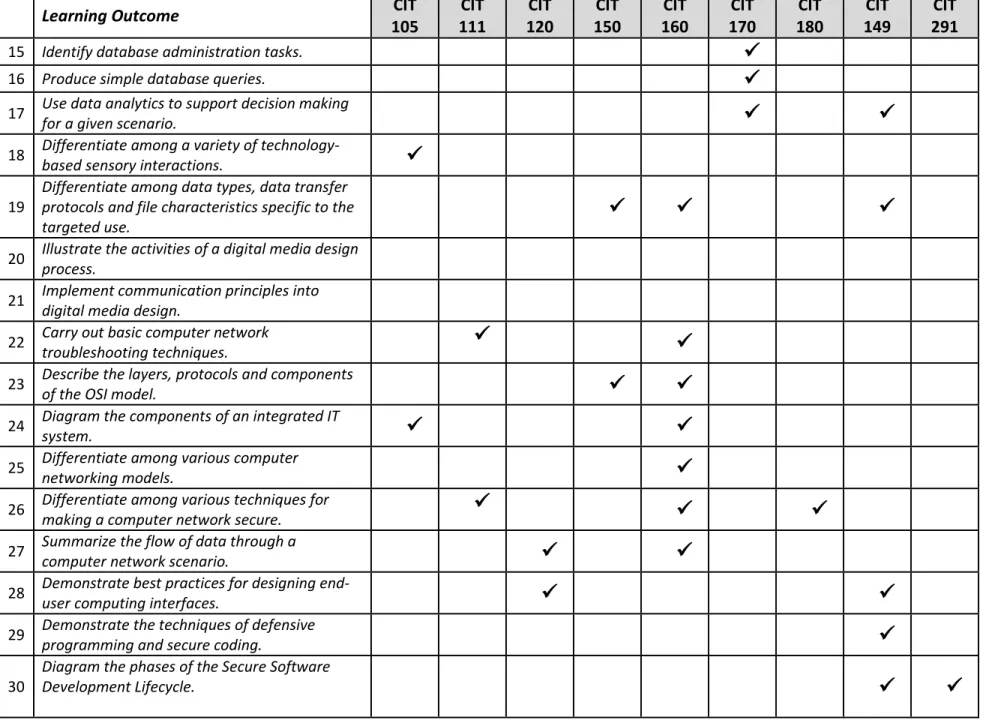
1060C CTS
CTS 2120C: Security + - This course provides the student with an understanding of the computer, network, infrastructure and information security issues facing industry worldwide. The skills developed by students completing this course will prepare them for the Security+ certification exam. Students will gain a basic knowledge and/or competency of Internet skills and tasks in 3 core content areas: Internet Business Fundamentals, Site Development Fundamentals, and Network Technology Fundamentals.
Emphasis is placed on the use of microcomputer database management software for common business applications.
1133C CTS
Using appropriate database software, students learn to maintain and manipulate data in an organized, accessible, and accurate manner.
2131C CIS
1000C COP
1334C CIS
1513C CET
2472C CTS
2120C CGS
1557C CGS 1540C
Develop the knowledge and skills necessary to install, configure, and troubleshoot a Linux-based workstation, including basic network functions. CIS238DL: Linux System Administration - Managing Linux Operating Systems, including sophisticated manipulation of file structures, backup systems, print processes, troubleshooting, user account management, hard disk maintenance and configuration, monitoring and process prioritization, kernel customization, and system resource control.
ITS 149AD: Database Administration I - ITS 149AD is designed to give students a firm foundation in basic database administration
They will also learn how to create an operational database and properly manage the various structures in an effective and efficient manner, including performance monitoring, database security, user management and backup/recovery techniques. Hands-on activities will include how to connect to and navigate the Internet, create World Wide Web pages, and develop World Wide Web sites. Students will also learn how to manage a database effectively using database technologies such as Resource Manager, Scheduler, Automatic Storage Management (ASM), and VLDB functions.
Students will establish a secure database using a virtual private database and learn how to efficiently move data from database to database.
101 ITS 124 ITS
128 ITS
129 ITS 144 ITS
148 ITS
149AD ITS 224 ITS
227 ITS
228 ITS
229AD ITS 293
IST 212: Visual Basic Programming - Visual Basic will be used to create applications for the Windows operating system. Theory will be reinforced with projects to be completed using database software on the Manor Student Network. Students will be required to keep a log of their hours and feedback from employers will affect the student's course grade.
There will be six (6) sessions with the course instructor to discuss various work-related topics, including appropriate work attire and ethics, working in teams, managing your manager, how to deal with stress, etc.
105 IST 106 IST
205 IST 215 IST
218 IST 181 IST
203 IST 206 IST
210 IST 211 IST
212 IST 217 IST
219 IST 299
203 IST 206 IST
The course also addresses legal and ethical issues associated with part of the software product lifecycle; such as legal and ethical consequences of software failures; functionality and extensibility limitations; and license and support agreements. The course emphasizes legal and ethical issues pertaining to all aspects of project management; such as issues related to contractual agreements and licensing, procurement and management of resources, testing and deliverables, and customer support and management. Students will learn tools and strategies to build web applications based on cloud services, integrate third-party APIs, and integrate big data tools such as predictive analytics.
Students examine legal and ethical issues specific to the cloud computing environment, such as data security, integrity, and privacy; and continuity of service.
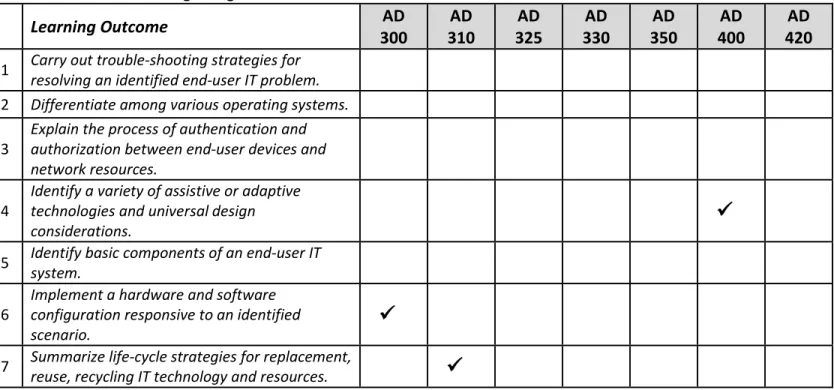
133J CIS
Introduces how to write Java programs that solve practical, real-world, business-oriented problems using object-oriented design techniques. CIS 233J: Java Programming II - Covers using Java to access databases and files, including XML. CIS 234J: Java Programming III - Learn to use Java/J2EE to build scalable n-tiered web applications.
Learn advanced Apache Tomcat web server configuration, including how to secure web resources, authenticate users, and mask URLs.
233J CIS 234J
CIS 215: Implementing a Server Environment - This course provides students with the knowledge and skills necessary to implement and. In addition, this course provides the skills and knowledge needed to install and configure Linux server and Mac OS X Server to create file, print, web, and terminal servers. CSCI 133: Database Concepts I (SQL) - This course provides the student with an introduction to the structure and function of database systems, with an emphasis on practical applications.
ENS 211: Introduction to GIS/GPS - This course teaches students to use GIS (Geographical Information System) software and GPS (Global Position System) technology.
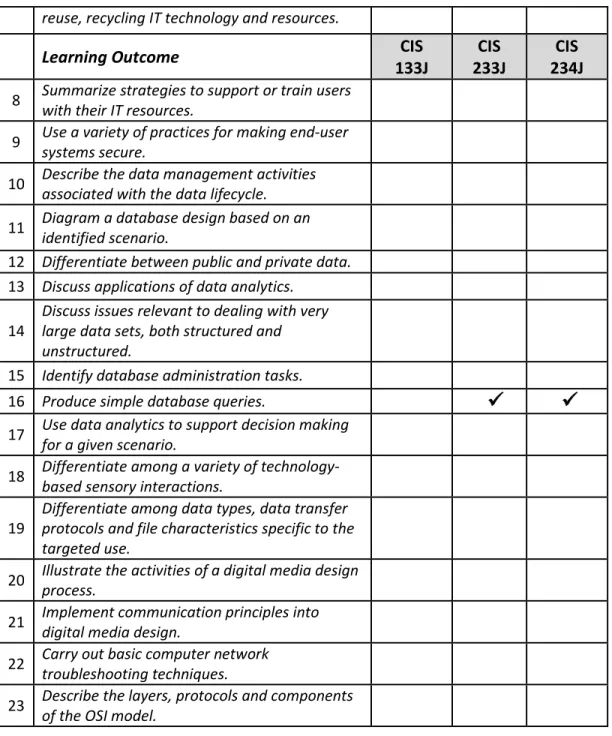
128 CIS
The students will use the choice statement to query the database and produce the correct outcomes. CSCI 160: Computer Science I (Java) - An introduction to computer science, including problem solving, algorithm development, and structured programming in a high-level language. Students will learn to collect waypoints using GPS technology and will download the waypoint data onto GIS mapping software.
Students will develop maps and enter attribute data to match created maps.
129 CIS
CIS 297: Information Technology Internship - Provides the student with an opportunity to experience the world of work.
164 CIS 165 CIS
181 CIS
212 CIS
215 CSCI
122 CSCI
133 CSCI
160 ENS 211 CIS
